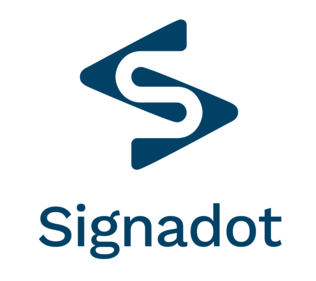 By Ben Bartling, ZoomShift co-founder
By Ben Bartling, ZoomShift co-founder
Brief Company Description: ZoomShift is easy-to-use online employee scheduling software.
Product Overview
ZoomShift takes a very focused approach to the problem of scheduling and has one main goal—to simplify employee scheduling for both managers and staff members. With ZoomShift, managers can create staff schedules quickly with an intuitive online scheduler that takes into account variables like availability, overtime, and shift coverage. Managers can then distribute schedules with one click and employees will receive notifications via email and text message. After receiving their schedule, staff members then have the ability to easily trade shifts with each other.
By streamlining this process, managers can spend less time creating and managing schedules, and more time focusing on growing their business. Employees no longer have to track down their schedules every week, they can easily make availability changes, and they are given more flexibility when it comes to their schedule.
Founder’s Story
I founded ZoomShift in 2011 while still in school at Marquette University. At this time, I had many friends that worked in the service industry, and I had also experienced first-hand the pitfalls of employee scheduling. ZoomShift was born out of the classic ‘scratch your own itch’ scenario.
Early on, I took ZoomShift through local technology accelerator 94labs. This experience opened many doors and helped shape myself as well as ZoomShift. Unfortunately, this chapter ended abruptly, as the main funder of the accelerator—an Angel investor who made his fortune in the High-Frequency Trading space—hit financial trouble. We went from a well-funded company back to a bootstrapped company.
During the accelerator I met my co-founder, Jon Hainstock, and we joined forces to start a digital marketing agency called Tailwind Creative. We decided to use the agency as a means to self-fund ZoomShift as opposed to chasing another round of funding. This decision has played out well for us. The agency funded the development of ZoomShift for the past year, and now we are back to working exclusively on ZoomShift.
Marketing/Promotional Strategy
We are inbound marketers. Our main drivers are organic search traffic and content marketing. While employee scheduling software isn’t a new concept, it is still relatively new to most companies. The majority of our customers are adopting a scheduling solution for the first time, and their first thought is usually to search on Google. Organic rankings provide us a channel to place ourselves in front of our customers at the moment they decide they need a solution like ours. General content marketing has been a complementary effort to increasing our organic rankings, but it has also proved to be a legitimate driver of qualified leads.
Market Opportunity
When we initially started ZoomShift, we were heavily focused on the restaurant industry. Restaurants are a great fit for employee scheduling software due to high-turnover, part-time positions, and a generally younger workforce. Despite long-standing competitors like HotSchedules, the National Restaurant Association reported that only 14 percent of restaurants used any form of online scheduling in 2011. Restaurants have proven to be a great market for ZoomShift and we still have a lot of open market in front of us.
Further, after building our foundation around restaurant scheduling, it was only natural that ZoomShift fit many other industries. We now provide scheduling solutions for varying types of businesses—from hotels and retail outlets to fire stations and yoga studios. The wide range of businesses that deal with employee scheduling on a daily basis is proving to be a vast pool of potential customers.
Market Differentiation
Employee scheduling is not a simple process, and this is why even some of the most robust scheduling systems fail to streamline the process. When examining this market, we saw an opportunity for a solution that strived to be less as opposed to more. We don’t focus on our feature list, and we don’t stray from the basics of employee scheduling. Also, while scheduling can be a complex problem to solve, we prefer to not look at it as so. If you distil it down, employee scheduling is all about communication. We have built an application that gets out of the way of the user and focuses on giving employees and managers the tools they need to communicate better. The result is a lightweight solution that is easy to learn, yet robust enough to handle hectic and large schedules.
Business Model
ZoomShift represents your typical SaaS [Software-as-a-Service] model. Our customers can access ZoomShift from anywhere at anytime, and in return they pay us a monthly fee based on the number of employees they have. All accounts have a 30-day free trial and there are no contracts or surprises. Simple pricing for simple scheduling.
Current Needs
Like any startup we have had our ups-and-downs along the way, but at the moment we are experiencing steady growth. While we obsess over increasing our growth pattern, we don’t believe that a larger team or influx of capital is what we need. We value the fact that we are nimble and want to stay lean for as long as we can.
With that said, we are always looking to connect with other entrepreneurs, developers, and like-minded people. Genuine relationships have been instrumental in our success thus far and as a result we are always trying to broaden our network and help others. If you would like to connect don’t hesitate to reach out to us.
# # #
Website: www.zoomshift.com
Headquarters: Milwaukee, Wisconsin
Year Founded: 2011
Founders: Jon Hainstock, Ben Bartling
Investors: Bootstrapped
Twitter: @zoomshift
Facebook: facebook.com/zoomshift













